Abstract
It was possible to detect in the sera of patients, for whom visceral larva migrans had been confirmed histologically, not only antibodies to the excretory–secretory antigens of Toxocara canis by means of fluorescence techniques, but also specific homocytotropic antibody measured by passive cutaneous anaphylactic tests in baboons and monkeys. It was observed that these patients had ten to fifteen times the average normal level of IgE as determined by the radioimmunosorbent test. All cases authenticated histologically gave these results, which suggests that these sort of serological findings can make a contribution towards establishing a diagnosis of visceral larva migrans in man.
A schematic representation is given which shows the immunological responses of the host which may result from different nematode allergens and antigens, and the immunopathological mechanisms likely to be involved.
Full text
PDF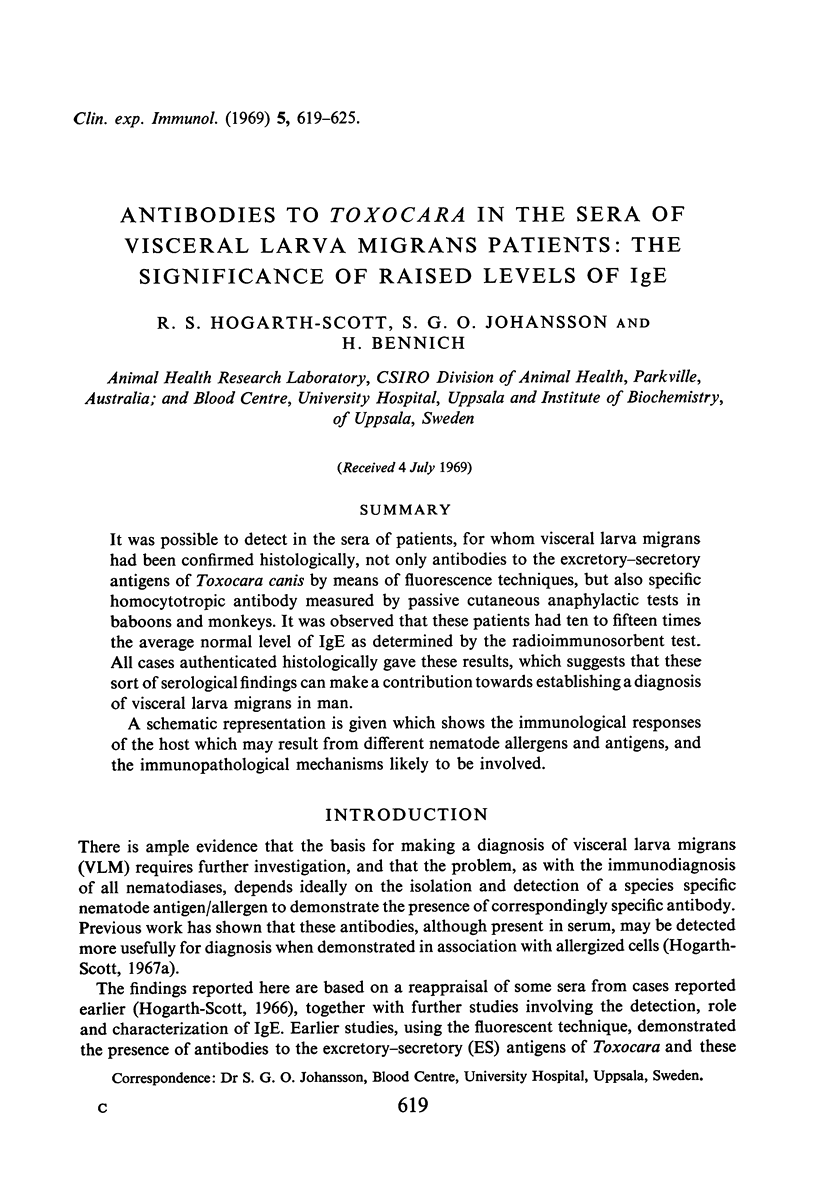
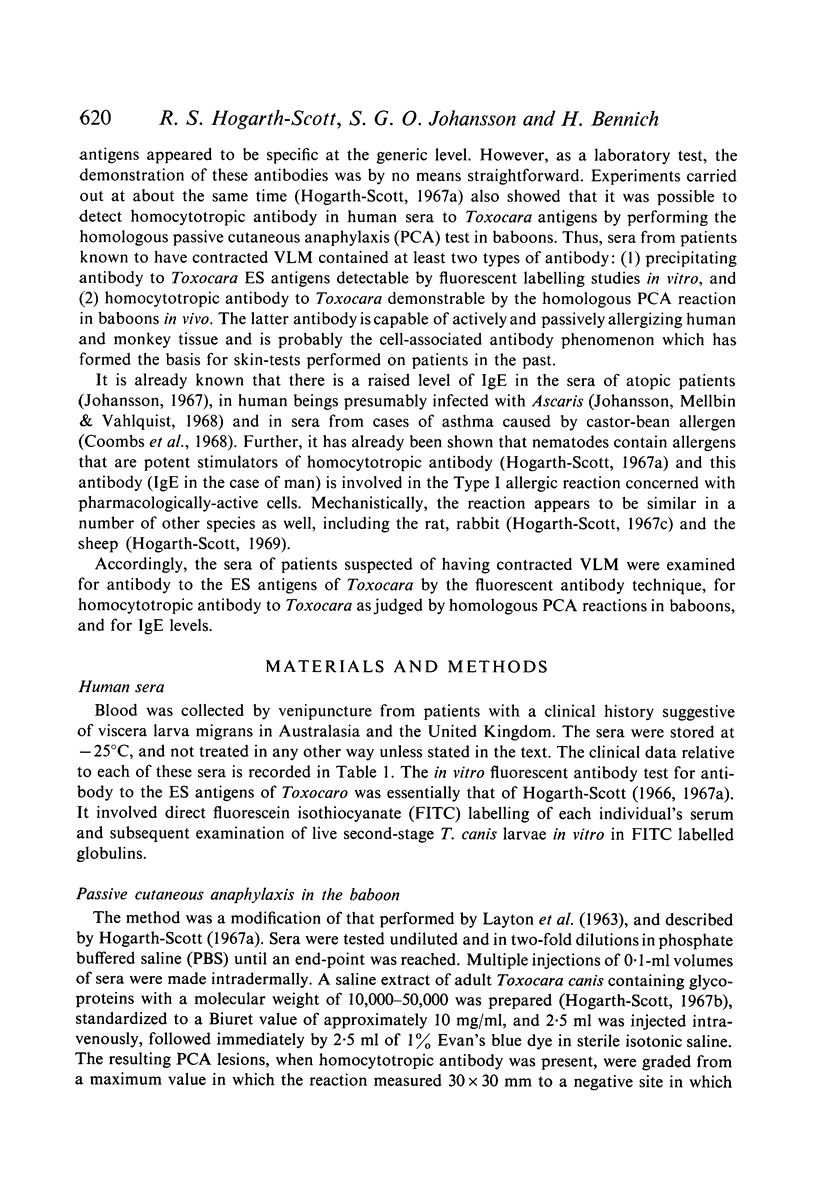
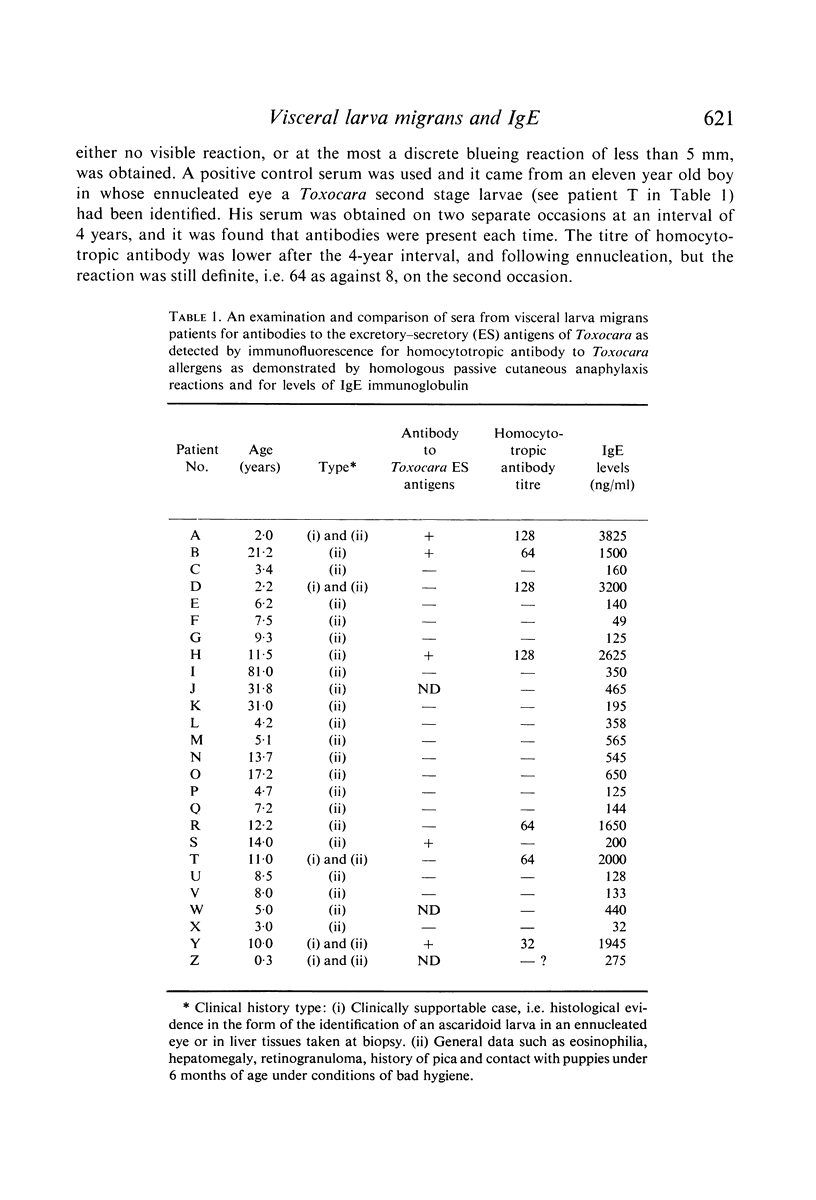
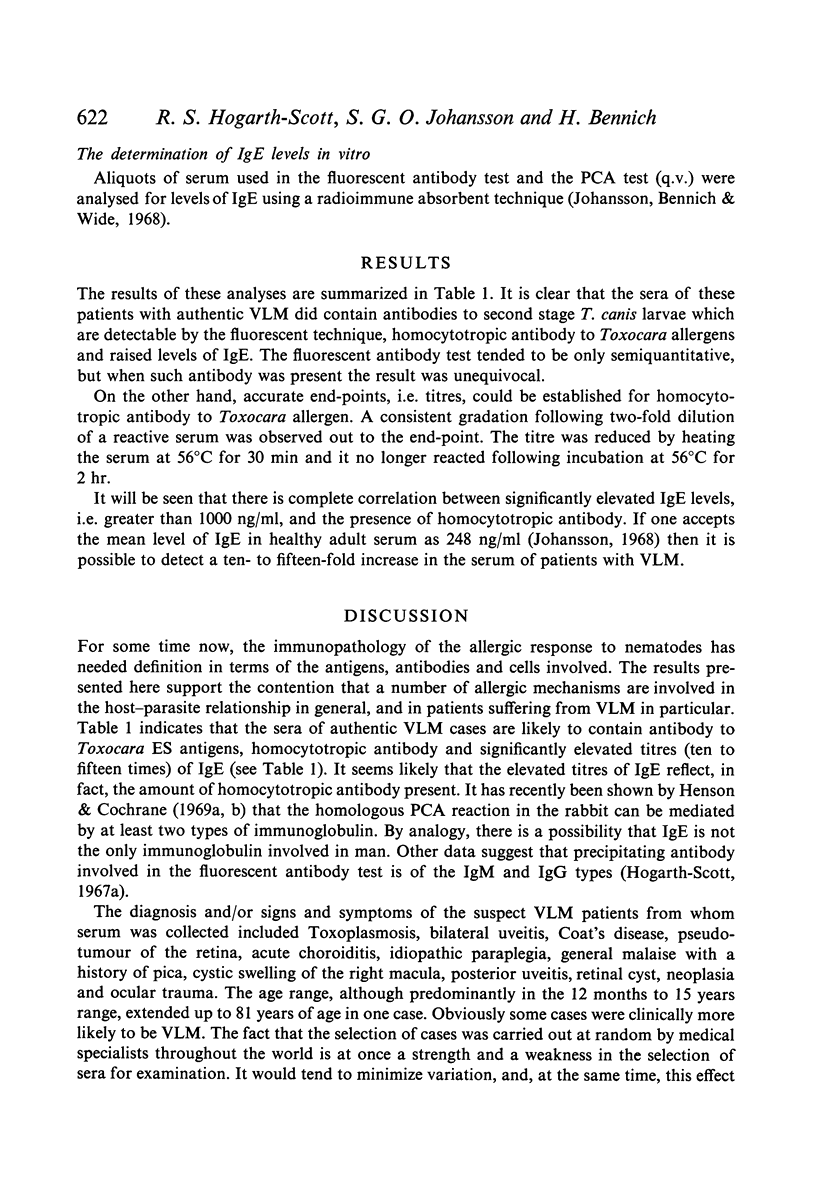
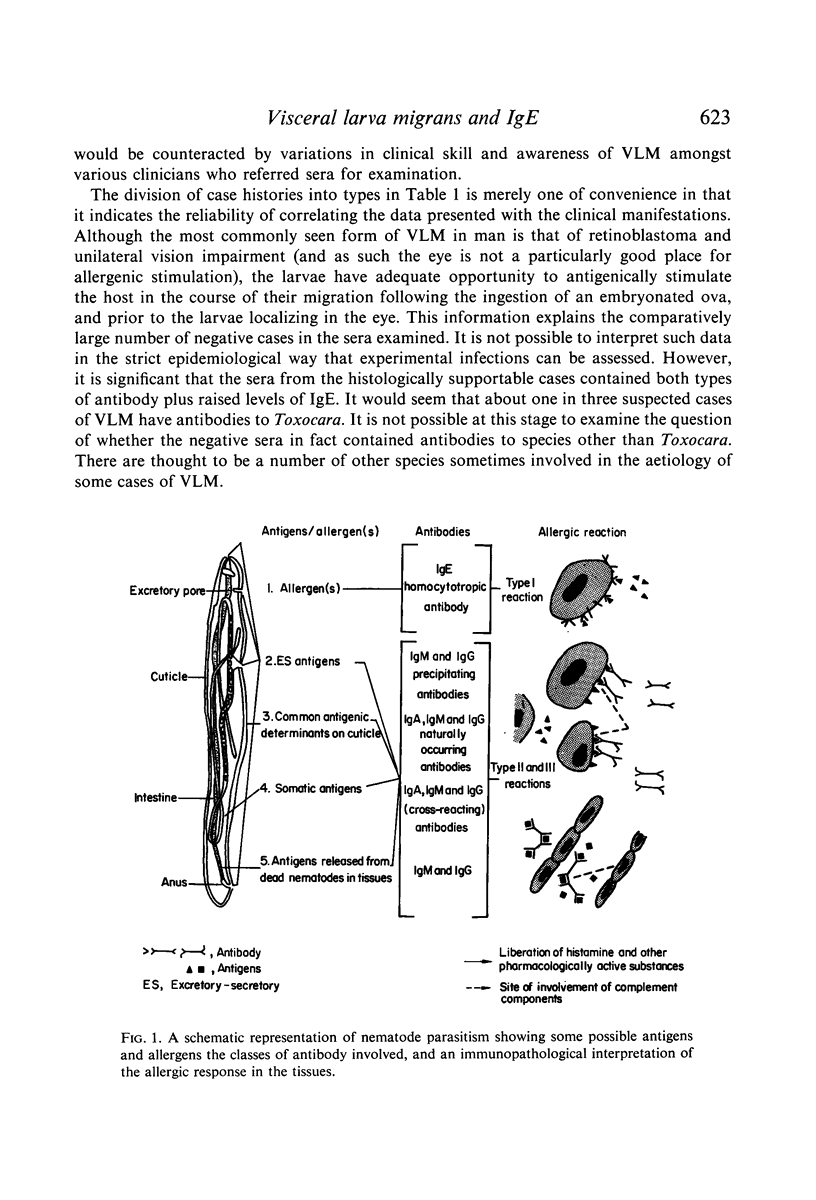
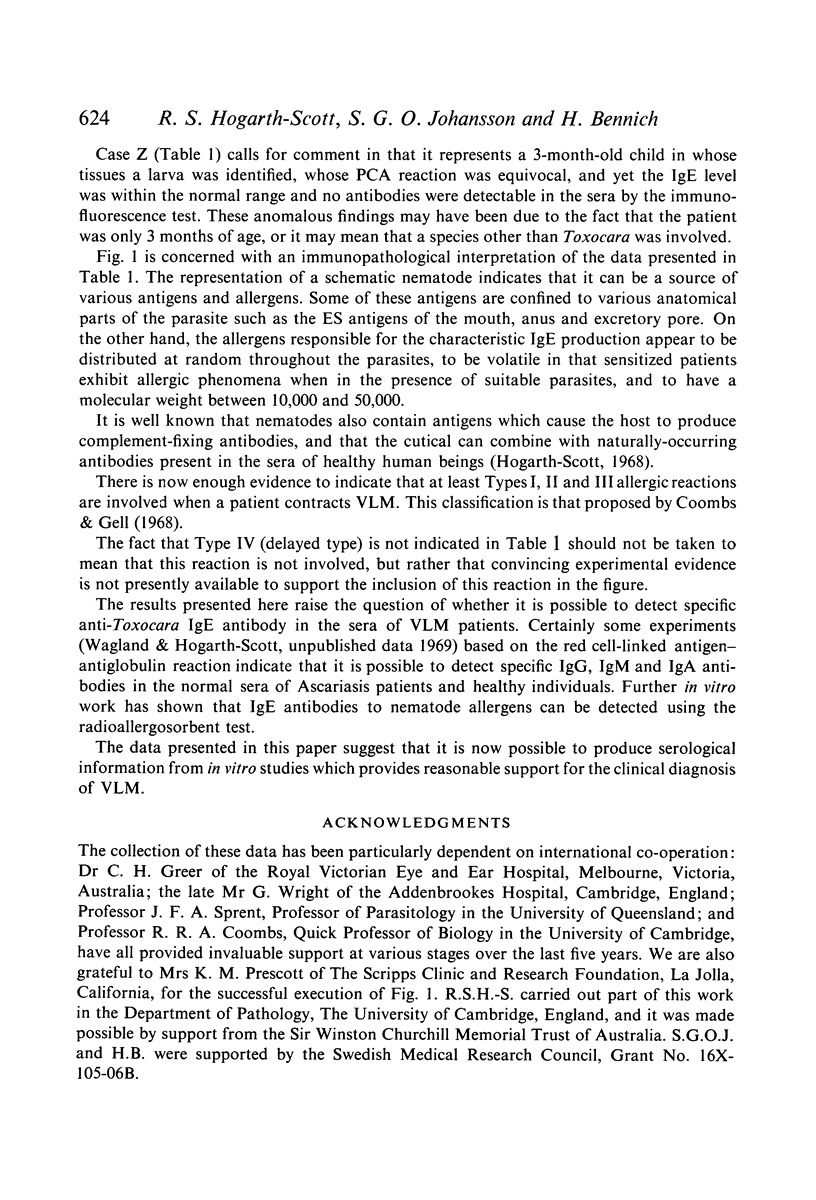
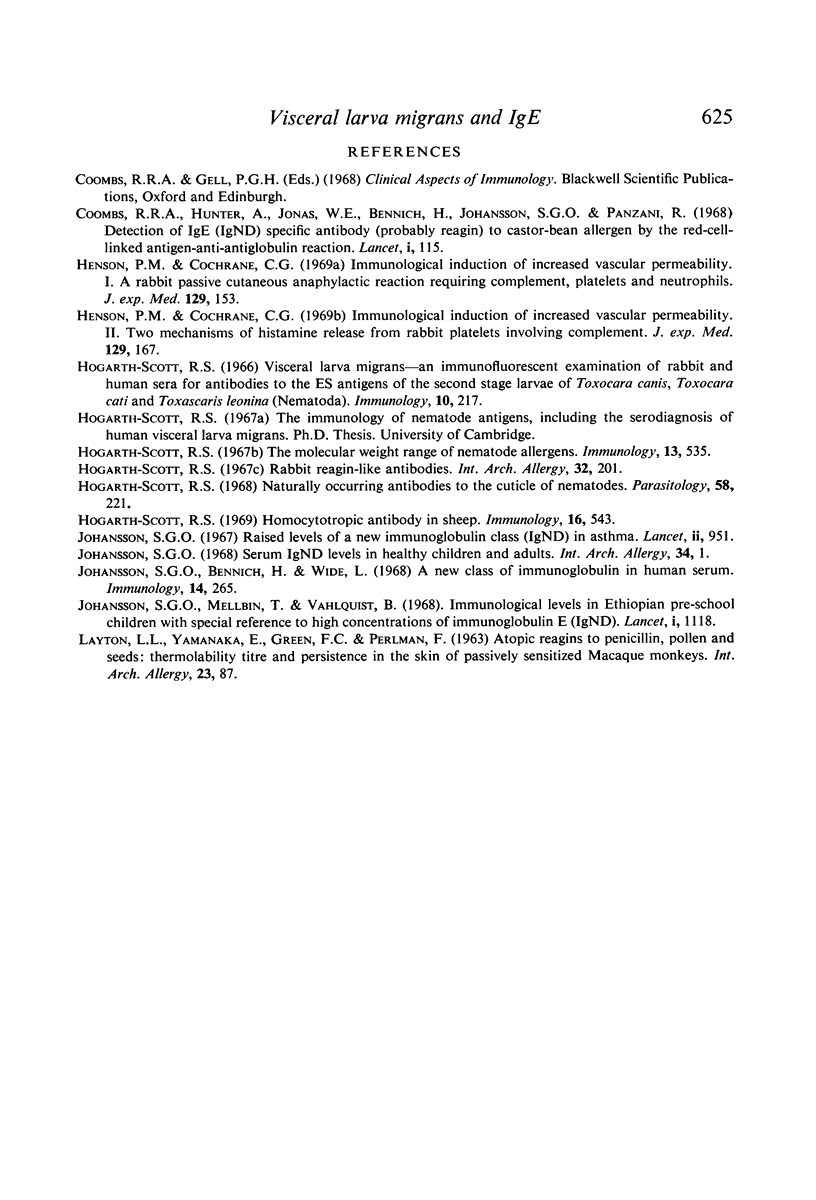
Selected References
These references are in PubMed. This may not be the complete list of references from this article.
- Henson P. M., Cochrane C. G. Immunological induction of increased vascular permeability. I. A rabbit passive cutaneous anaphylactic reaction requiring complement, platelets, and neutrophils. J Exp Med. 1969 Jan 1;129(1):153–165. doi: 10.1084/jem.129.1.153. [DOI] [PMC free article] [PubMed] [Google Scholar]
- Henson P. M., Cochrane C. G. Immunological induction of increased vascular permeability. II. Two mechanisms of histamine release from rabbit platelets involving complement. J Exp Med. 1969 Jan 1;129(1):167–184. doi: 10.1084/jem.129.1.167. [DOI] [PMC free article] [PubMed] [Google Scholar]
- Hogarth-Scott R. S. Homocytotropic antibody in sheep. Immunology. 1969 Apr;16(4):543–548. [PMC free article] [PubMed] [Google Scholar]
- Hogarth-Scott R. S. Naturally occurring antibodies to the cuticle of nematodes. Parasitology. 1968 Feb;58(1):221–226. doi: 10.1017/s003118200007356x. [DOI] [PubMed] [Google Scholar]
- Hogarth-Scott R. S. Rabbit reagin-like antibodies. Int Arch Allergy Appl Immunol. 1967;32(2):201–207. doi: 10.1159/000229928. [DOI] [PubMed] [Google Scholar]
- Hogarth-Scott R. S. The molecular weight range of nematode allergens. Immunology. 1967 Nov;13(5):535–537. [PMC free article] [PubMed] [Google Scholar]
- Hogarth-Scott R. S. Visceral larva migrans--an immunofluorescent examination of rabbit and human sera for antibodies to the ES antigens of the second stage larvae of Toxocara canis, Toxocara cati and Toxascaris leonina (Nematoda). Immunology. 1966 Mar;10(3):217–223. [PMC free article] [PubMed] [Google Scholar]
- Johansson S. G., Bennich H., Wide L. A new class of immunoglobulin in human serum. Immunology. 1968 Feb;14(2):265–272. [PMC free article] [PubMed] [Google Scholar]
- Johansson S. G., Mellbin T., Vahlquist B. Immunoglobulin levels in Ethiopian preschool children with special reference to high concentrations of immunoglobulin E (IgND). Lancet. 1968 May 25;1(7552):1118–1121. doi: 10.1016/s0140-6736(68)90187-6. [DOI] [PubMed] [Google Scholar]
- Johansson S. G. Raised levels of a new immunoglobulin class (IgND) in asthma. Lancet. 1967 Nov 4;2(7523):951–953. doi: 10.1016/s0140-6736(67)90792-1. [DOI] [PubMed] [Google Scholar]
- Johansson S. G. Serum IgND levels in healthy children and adults. Int Arch Allergy Appl Immunol. 1968;34(1):1–8. doi: 10.1159/000230089. [DOI] [PubMed] [Google Scholar]
- LAYTON L. L., YAMANAKA E., GREENE F. C., PERLMAN F. ATOPIC REAGINS TO PENICILLIN, POLLENS AND SEEDS: THERMOLABILITY, TITER AND PERSISTENCE IN THE SKIN OF PASSIVELY SENSITIZED MACAQUE MONKEYS. Int Arch Allergy Appl Immunol. 1963;23:87–94. doi: 10.1159/000229406. [DOI] [PubMed] [Google Scholar]


